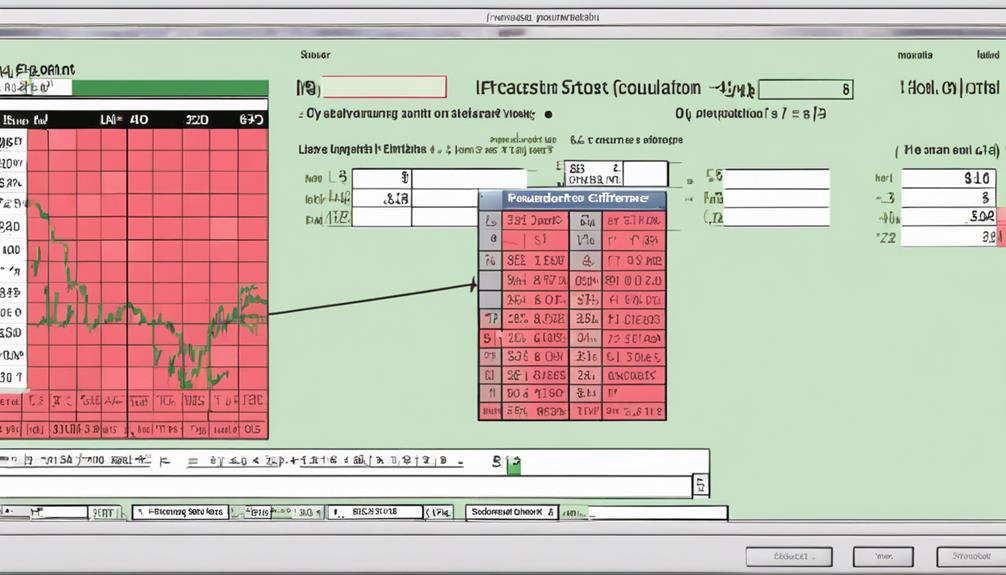Understanding how to calculate stock standard deviation is crucial for investors looking to grasp the risk associated with their investments. By following a structured process involving three essential steps, individuals can gain valuable insights into the variability of stock returns.
These calculations serve as a cornerstone for informed decision-making in the world of finance, providing a solid foundation for evaluating potential market fluctuations and making strategic investment choices. Mastering these steps can empower investors to navigate the complexities of the stock market with confidence and precision.
Determining Average Return
In the realm of stock analysis, determining the average return serves as a fundamental step towards evaluating stock performance and calculating standard deviation.
The average return is calculated by summing all returns and dividing by the number of data points. This average return figure is crucial as it provides a reference point for measuring how far stock returns deviate from the mean.
When trying to find the standard deviation of a stock, one would use the average return as a key input in the calculation. Stocks with consistent returns centered around the average will have a low standard deviation, indicating lower volatility.
Understanding the average return helps investors assess the variability and risk associated with stock investments. Accurately computing the average return is essential for obtaining a reliable standard deviation value, which in turn aids in making informed investment decisions based on the level of risk and return associated with a particular stock.
Squaring Differences From Mean

Utilizing the squared differences from the mean enables the quantitative assessment of deviations of individual data points in stock analysis.
- The standard deviation formula involves calculating the variance for each data point.
- It helps to quantify how far each data point deviates from the average return.
- By squaring the differences, negative and positive deviations are treated equally in the analysis.
- Summing the squared variances provides the basis for determining the spread and dispersion of historical returns.
This step is crucial in understanding the distribution of data points around the mean and is fundamental in constructing the bell-shaped curve that represents the expected range of returns. High standard deviation indicates a wider dispersion of data points, signifying greater volatility in stock performance. Ultimately, the square root of the variance yields the standard deviation, a key metric in assessing and managing investment risk.
Calculating Stock Standard Deviation

Building upon the foundational understanding of squaring differences from the mean in stock analysis, the calculation of stock standard deviation involves determining the variance of stock returns relative to the mean.
To calculate the stock standard deviation, one must first find the differences between each stock return and the mean return, square these differences, sum them up, and then take the square root of this sum. This process provides a numerical measure that helps evaluate the volatility and risk associated with a particular stock.
Stock standard deviation offers insights into how much the stock's returns deviate from its average return, allowing investors to assess the level of investment risk involved. By analyzing stock standard deviation, investors can make informed decisions about their portfolios, predict potential returns, and manage the associated risks effectively.
Understanding and utilizing stock standard deviation is essential for evaluating investment risk and making sound investment choices based on the calculated deviation.
Can You Use the 3-Step Method to Calculate Stock Standard Deviation for Interpreting Values in the 5-Step Guide?
Yes, you can use the 3-step method to calculate stock standard deviation for interpreting standard deviation values in the 5-step guide. It involves finding the mean, calculating the squared differences, and taking the square root. This method is essential for understanding the spread of data within stock returns.
Frequently Asked Questions
How Do You Calculate Standard Deviation of a Stock?
To calculate the standard deviation of a stock, analyze the stock's historical returns to determine the average return, then compute the squared differences from the mean. Sum these values, divide by data points minus one, and take the square root for the standard deviation.
What Are the 5 Steps to Calculate Standard Deviation?
In the realm of statistical analysis, calculating standard deviation involves a meticulous process. Delving into the depths of data, it entails determining variations from the mean and ultimately providing a comprehensive measure of dispersion.
What Are the 4 Steps to Solve for Standard Deviation?
To solve for standard deviation, calculate the average, find differences from the average, square differences, sum squares, divide by data points minus one, and take the square root. This statistical measure assesses the dispersion of data points from the mean.
How Do You Calculate Standard Stock?
Standard deviation in stock analysis provides a key insight into price volatility, aiding investors in risk assessment. By determining the dispersion of stock prices around their average, this statistical measure offers crucial information for decision-making.
Conclusion
In conclusion, calculating stock standard deviation is essential for investors to assess risk and variability. By following the three key steps outlined, investors can make informed decisions about their investments and better understand market fluctuations.
An interesting statistic to note is that the standard deviation of a stock's returns can provide valuable insights into its volatility and potential performance.
